How to Draw a Bus
On this page i will show you two different methods on how to draw a bus, and share some additional tips to sketch this vehicle even better.

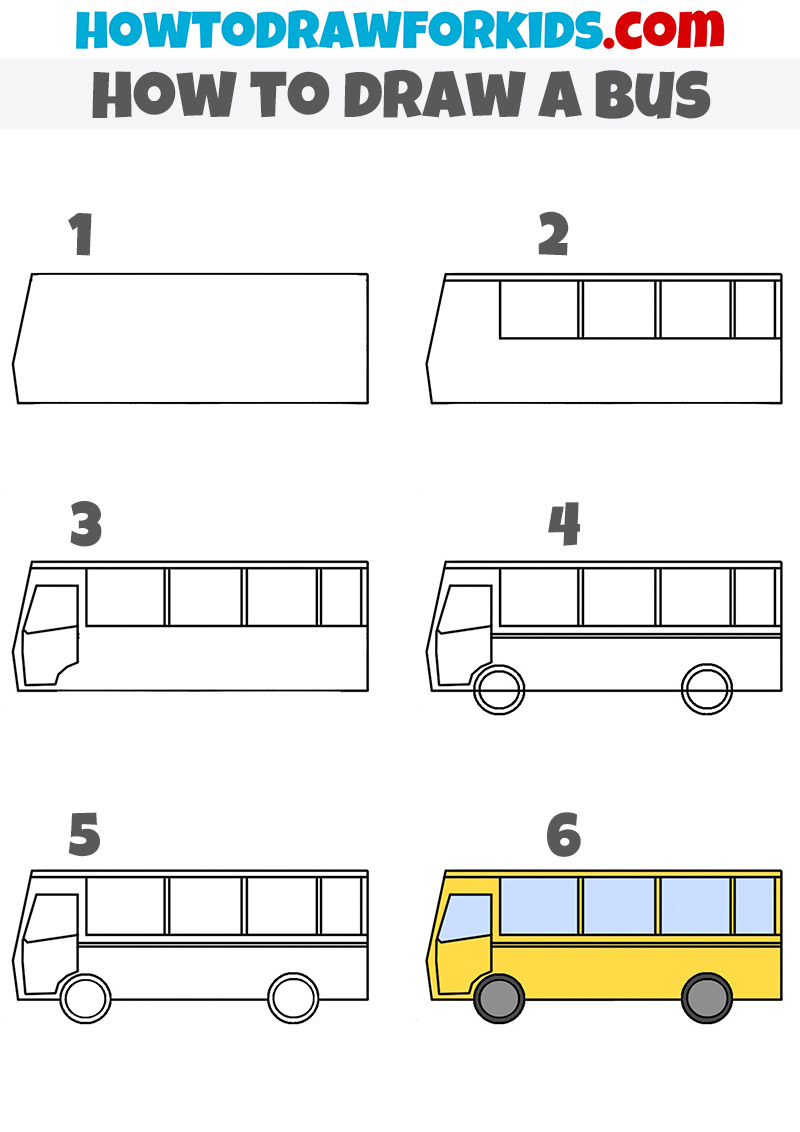
How to Draw a Bus: Introduction
By focusing on the accurate alignment and proportion of each element, from windows to doors, the goal is to achieve a realistic representation of a city bus.
Also, by following this tutorial, young artists learn the basic shapes and structures needed to draw various vehicles. This foundational knowledge can be applied to drawing other types of vehicles like cars, trucks, and trains.
Also young artists will practice drawing straight lines, a fundamental skill in art. This helps in improving their precision and control, which are really important for creating detailed and accurate drawings.
Bus Drawing Tutorial
Materials
- Pencil
- Paper
- Eraser
- Coloring supplies
Time needed: 40 minutes
How to Draw a Bus
- Form the body of the bus.
Begin by visualizing the length of the bus. Draw a long, horizontal rectangle that spans most of your drawing area; this will form the body of the bus. On the left end of the rectangle, add a truncated shape, like a trapezoid without the bottom base, which will serve as the front of the bus.

- Add the windows of the vehicle.
Within the confines of the long rectangle, sketch five evenly spaced vertical lines starting from the trapezoidal front. These lines will be the framework for the windows on the side of the bus. Ensure they are proportionate to the height of the rectangle.
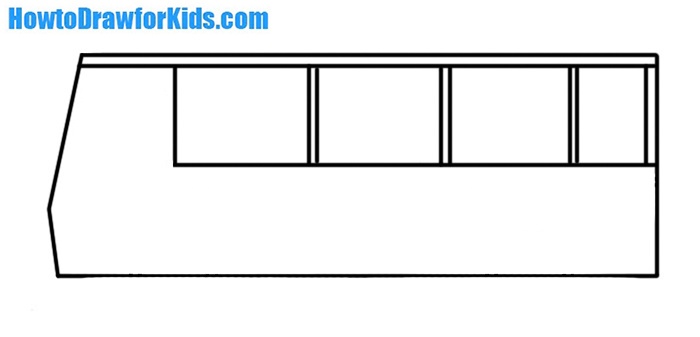
- Draw the door of the bus.
Crete the bus door behind the front wheel area, adding two parallel lines for its edges and a line for the top. Ensure the door is proportional to the bus, suggesting it can slide or swing open. You can include a handle to highlight the door’s functionality.
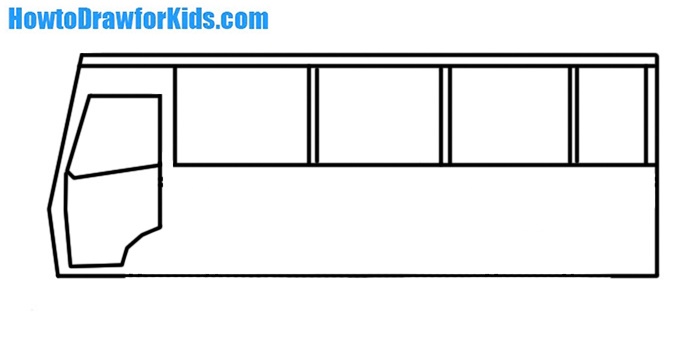
- Illustrate the wheels.
Just below the body of the bus, draw two large circles for the wheels. They should be in proportion to the bus body, substantial enough to support its size. Add lines at the side of the body. The lines should be parallel and clean to maintain a sense of order and neatness in the structure of the bus.
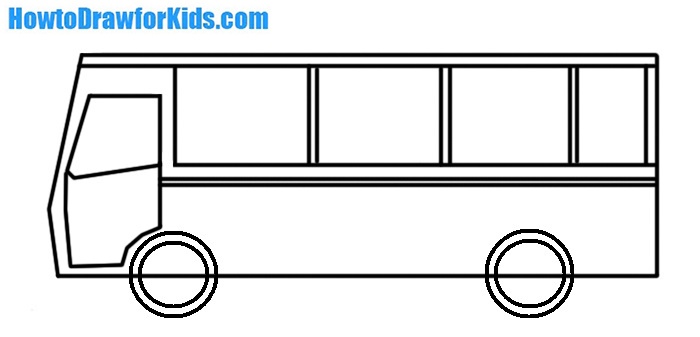
- Refine your sketch.
Trace over your initial pencil lines with a darker stroke to solidify the outline of the bus. This step is about refining and defining, so carefully go over each part, ensuring that the lines are smooth and that any unnecessary guidelines are erased or cleaned up.
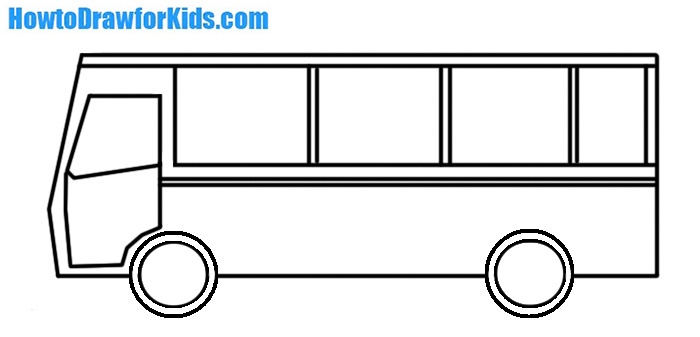
- Add colors to the bus.
Choose a vibrant yellow, the classic color for a school bus, and fill in the body, avoiding the windows, wheels, and headlights. Next, add a medium gray shade to the wheels to create the rubber tires. For the windows, use a light blue to give an impression of glass reflecting the sky.

Additional Content
To complement the bus drawing tutorial, I have also compiled a free PDF file. This compact version is tailored for on-the-go practice, allowing you to hone your skills without the need for internet access.
Beyond the foundational stages, this PDF provides additional materials aimed at elevating your drawing prowess.
How to Draw a Bus for Kindergarten
This is an additional bus drawing tutorial, providing a different approach from the first one. While the first tutorial focuses on a more detailed and a bit more realistic bus with straight lines and precise shapes, this one offers a simpler, more rounded design suitable for younger artists. The distinctive features include fewer steps, a more streamlined appearance, and an easier sequence of steps.
To draw this bus, start with a large, rounded rectangle for the body. Add a vertical line to create the front and a horizontal line for the windows. Next, draw two rectangles for the windows and a door. Add another rectangle at the front for the windshield. Draw three circles at the bottom for the wheels. Finally, outline the entire bus, add details like the wheels and windows, and color it yellow.
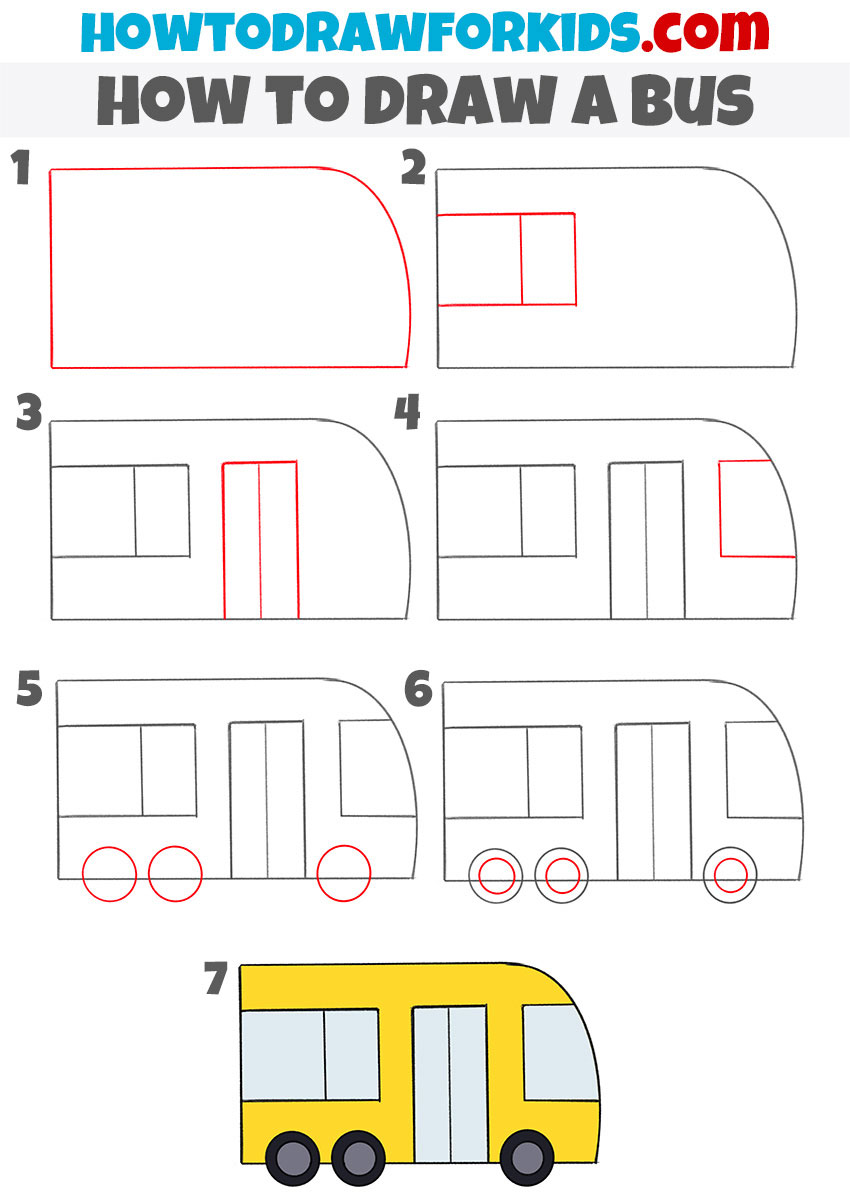
Key Mistakes to Sidestep in Bus Drawing for Beginners
Even in simplicity, there are pitfalls that await the unwary illustrator. Let me illuminate these common missteps so that your bus drawings turn out really great.
- Not maintaining straight lines for the bus body, leading to a wobbly structure.
- Windows of varying sizes can create a sense of disproportion.
- Overlooking the symmetry of the bus’s wheels, which may result in an unbalanced look.
- Applying uneven pressure while coloring, causing the final product to lack uniformity.
- Misplacing the horizon line, which can throw off the perspective.
- Neglecting to use light strokes initially, making corrections more challenging.
Addressing Your Top Bus Drawing Inquiries
- How can we ensure the bus is symmetrical? One might employ a simple ruler to measure and compare distances, ensuring both sides mirror each other in harmony.
- Why are the wheels not perfectly round? The charm of art made by children lies in its imperfection, which we celebrate rather than correct. Over time, practice naturally leads to improved shapes.
- Can this lesson be adapted for other vehicles? Indeed, the foundational shapes and principles apply broadly and can be creatively adapted to draw various types of vehicles.
- How can we add more detail to our bus drawing? Details such as shading, people inside the bus, or even a backdrop can be introduced gradually as one’s confidence and skill expand.
- How long should a child spend on each step? Time is less of a teacher than observation and feeling; hence, each step should last as long as needed to feel complete and understood by the young artist.
Conclusion
After our session on drawing buses, consider to visit other tutorials. My website features lessons on a range of subjects, from butterfly wings to human nose. Each tutorial is created to help you train new skills and techniques.
I invite you to join my community of creators by subscribing to my social networks, where the pulse of new content beats strong. Your thoughts and suggestions are very important for me, so I welcome your comments beneath the lesson.


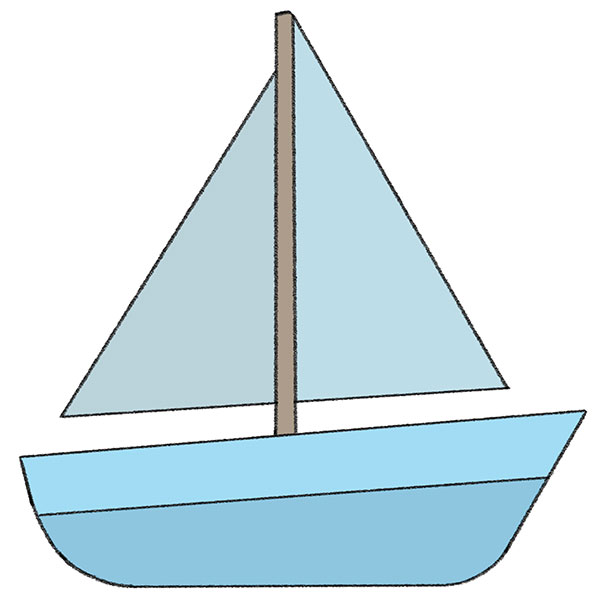


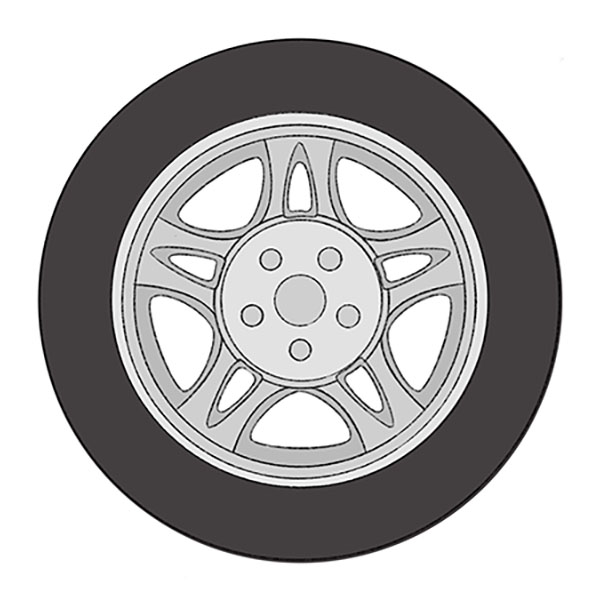

Thank you for this tutorial! Thank you!
You’re very welcome!
draw it
Really awesome!!
Thank you so much, Anna.